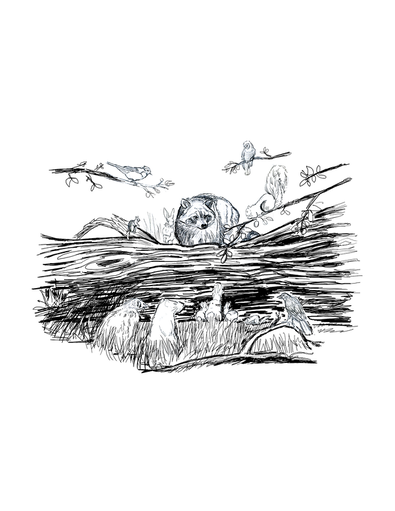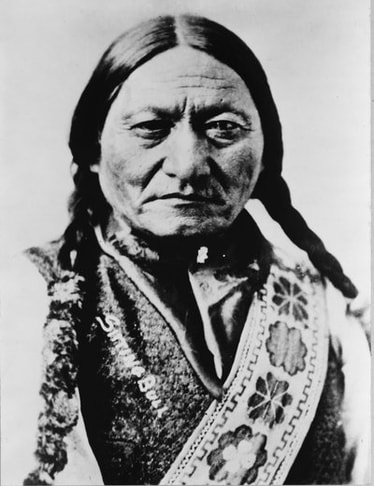A Novel of the 1862 Uprising““Damn it mon . . . ya beat me again.” McAllister threw down his cards with venom while the Indian seated opposite cackled in glee at the Scotsman’s misfortune. It was the third hand in a row and Jacob was wild-eyed, in part due to blathering intoxication.”  The White Mountains The White Mountains So begins my historical novel of the thirty-ninth man, a tale written to explain and expose the decline of a people. It is a story of love, betrayal, murder, and forgiveness, all borne out through the lens of historical fact. It is a tale of a mixed-blood, born in the White Mountains of New Hampshire, and we follow him as he grows, learning the ways of a solitary existence from his Algonquin mother. On the day of his birth, I introduce the reader to a ten-year-old boy living in Virginia and destined to become the first Indian Agent assigned to the Northwest Frontier.  Fort Snelling-Northwest Territory Fort Snelling-Northwest Territory The two grow, and taking separate paths, work their way west until they meet at Fort Snelling located at the confluence of the Mississippi and St. Peter Rivers. The young mixed-blood, then serving as scout and primary hunter for Colonel Josiah Snelling; the other, the newly appointed Indian Agent for the Northwest Territories.
0 Comments
By making the people dependent upon the government for their needs.The years between 1862 and 1890 saw the treaty system descend into little more than a theft vehicle for the U.S. Government by rewriting treaty language to shrink reservation land, and revise treaty promises to the detriment of the Indian Nations.  After the largest mass execution in U.S. history in Mankato, Minnesota, the army carried the fight westward with the intent of displacing the Native People from the land to make room for the nation’s expansion. The novel, Tears Of Sorrow- A Free Nation Lost, tells of the twenty-eight years and the changes that occurred in a Native family as westward expansion took everything from them. Chatter figured the problem with being a gray squirrel on the island was the fact that the darned humans kept chasing him, and he had run out of patience. It was time to call an emergency meeting of the Island Council. Oscar's Slingshot Oscar's Slingshot Last night’s downpour had quieted the floor of the big woods, and the air was heavy with the sweet smell of a hardwood forest after a rain. Dead branches swollen with water don’t snap like dry ones, and the layer of wet leaves made the earth as quiet as a pillow, deadening the footsteps of the two boys carrying their slingshot weapons. The gray squirrel was unusually quiet, his mouth stuffed with ash seeds he found scattered on the ground, a result of the deluge from the prior evening. His name was Chatter, as was his father’s and his father’s father before him. In fact, the name went back countless generations, being passed to the firstborn male of the family, as was the custom in the animal world. The name was apt, for Chatter was known to continue a tirade long after its cause was removed. He learned early on that he had the ability to influence others with his incessant babble, mainly because he could not be ignored. Much to his pleasure, he also learned that he could outrun and outjump his brothers and sisters when moving from branch to branch. This was a skill that earned the respect of his entire clan and, along with his demand to be heard, led to his election as the clan’s spokesman during meetings of the council. Problem was . . . deep inside he was a coward, and he knew it. As Darling sat atop the trunk of old Cottonwood, she looked over those gathered in the face of this latest crisis. The Island Council The Island Council Old Blue, the strident jay, was the representative for all the flying creatures inhabiting the swamps and high ground of the island. Blue had a warrior’s heart and would scream about everything. Present as well were representatives for every clan that called the island their home. Of course, Chatter, the gray squirrel that narrowly escaped the day before, was also there representing the squirrel clan, which included the grays, the reds, and the flying squirrels. Also included in his clan was the chipmunk and gopher population. He intended to use this council to full advantage, his narrow escape still fresh in his mind.  Custer Survey George Armstrong Custer (left center in light clothing) leads a military expedition into the Black Hills of Dakota Territory in 1874. Custer's incursion violated the Fort Laramie Treaty of 1868 and laid the groundwork for war between the Lakota and the United States when he announced that gold had been discovered in this most sacred of the Lakota's lands. Photograph by William H. Illingworth. (National Archives 777-HQ-264-854) Custer entered the Black Hills under the precept of searching for locations for future fort placement to enforce the 1868 Fort Laramie Treaty and keep white incursions from entering the area. Anyone that knew the truth also knew the deceit of President Grant's administration.
Did you know that all animals communicate with each other? Well, it’s true! I know this because I learned it from a ten-year-old boy who, in 1951, was given the power to talk with them. — Dale A. Swanson  Join me in a world where all animals speak the same language through mind sharing. If you pause to consider this, you will realize that an animal witnessed nearly everything that has happened in the last 6,000-years. Unlike humans, the animals have no need nor desire to “spin” any event to modify the truth. For only the second time in history, it became necessary for them to seek human involvement. Like the first time, without help they were powerless to solve a riddle that could stop the destruction of their homeland. They know very well, if they ever need the help of a human, they must choose a person with a pure heart. Anything less would be disastrous to all animals. How did Oyate—The People come to live in the Black Hills?Borders are defined through battles. Like all nations in the world, borders secured during battles define them. Some, however, are lost and gained through deceit and outright theft. This short excerpt is from Tears Of Sorrow–A Free Nation Lost. “What makes them look so dark?”
“As you get closer you notice that it’s the pines, so thick and heavy with shadow, they take on the appearance of being black. It’s a beautiful place, a sacred place.” He reached forward to pull the remnants of sage weed from his horse’s mane, running his fingers to remove the tangle. A meeting is held between the two men and the Great Chief refuses to surrender his people and move to reservation land. Colonel Miles views the chief's decision as stubborn defiance and steps up his campaign against the people.  Photo from the Library Of Congress Photo from the Library Of Congress In 1877, under increased pressure from Colonel Miles and the U.S. military, Sitting Bull, who had been consistently on the move with his people, leads them into Canada. Settling in a place called Wood Mountain, they once again find the free life they love, with buffalo to hunt without fear of attack by the U.S. Army. In the latter part of 1879 things changed for them. The buffalo no longer ranged that far north because the U.S. Army set fires to keep them south of the border. With knowledge of the state the Indians were in, the U.S. Government offered amnesty and food to the Sioux. Emissaries for the United States government began to cause discord by telling the young Lakota that the Indians were enjoying reservation life in the United States. There, food was distributed and they were allowed to hunt with primitive weapons. Both appealed to the young, and discord began to grow. Through the dance, the dead will rise. The buffalo will return and the land will be free of white involvement.1877
|
| Walker River, Nevada A Northern Paiute Medicine Man named, Wodziwob—Gray Hair, was into his third day entirely alone on a high plateau in Nevada when something spectacular occurred. The Paiute people, like most Indian cultures, believed the Great Spirit worked through dreams that often revealed the future. Unconvinced whether it was a vision or a dream, and not particularly concerned with how it came to him, he believed he saw the future. He saw himself in another world where he was told that a golden age for the Indian was at hand. For the vision to become a reality certain things needed to occur; songs, chants, and prayers were required while performing a circle dance during times of no sun—nighttime. The result would be that Indian tribal life would soon return, the dead would come back to life, and the animals the Indians had traditionally hunted—the buffalo—would be restored. | When his prophecies remained unfulfilled, Wodziwob sought new visions, which also remained unfulfilled. The dance he championed was practiced for a time, but when his predictions failed to materialize the dance was abandoned by the Northern Paiute. Around 1870, another Northern Paiute named Tävibo had prophesied that white people would disappear from the earth and the dead would return to life as it was before the white man came. With claims that he could communicate with the dead, Tävibo taught his followers a ceremonial dance that had them dance in a circle for extended periods while singing. If their mind was strong and their dance sincere, the changes he prophesied would be brought to fruition. Coming: My next post will introduce Wovoka and an outline of the part he played in bringing the Ghost Dance to the Lakota people. |
To learn more about the falsehoods used by the U.S. Government to steal Lakota land and their inability to destroy a resilient people, get your copies of The Thirty-Ninth Man–A Novel of the 1862 Uprising and the concluding history in Tears Of Sorrow-A Free Nation Lost click here. Both books weave fictional characters through a tapestry of historical facts.
Author
At seventy-nine, I’m at the beginning of a new chapter in a life filled with blessings from above, adventure, love of family, and kinships reaching into the heavens and to God himself. —AND— I love to tell a story.
Archives
May 2021
April 2020
February 2020
January 2020
August 2019
May 2019
April 2019
March 2019
February 2019
January 2019
December 2018
November 2018
October 2018
September 2018


 RSS Feed
RSS Feed
